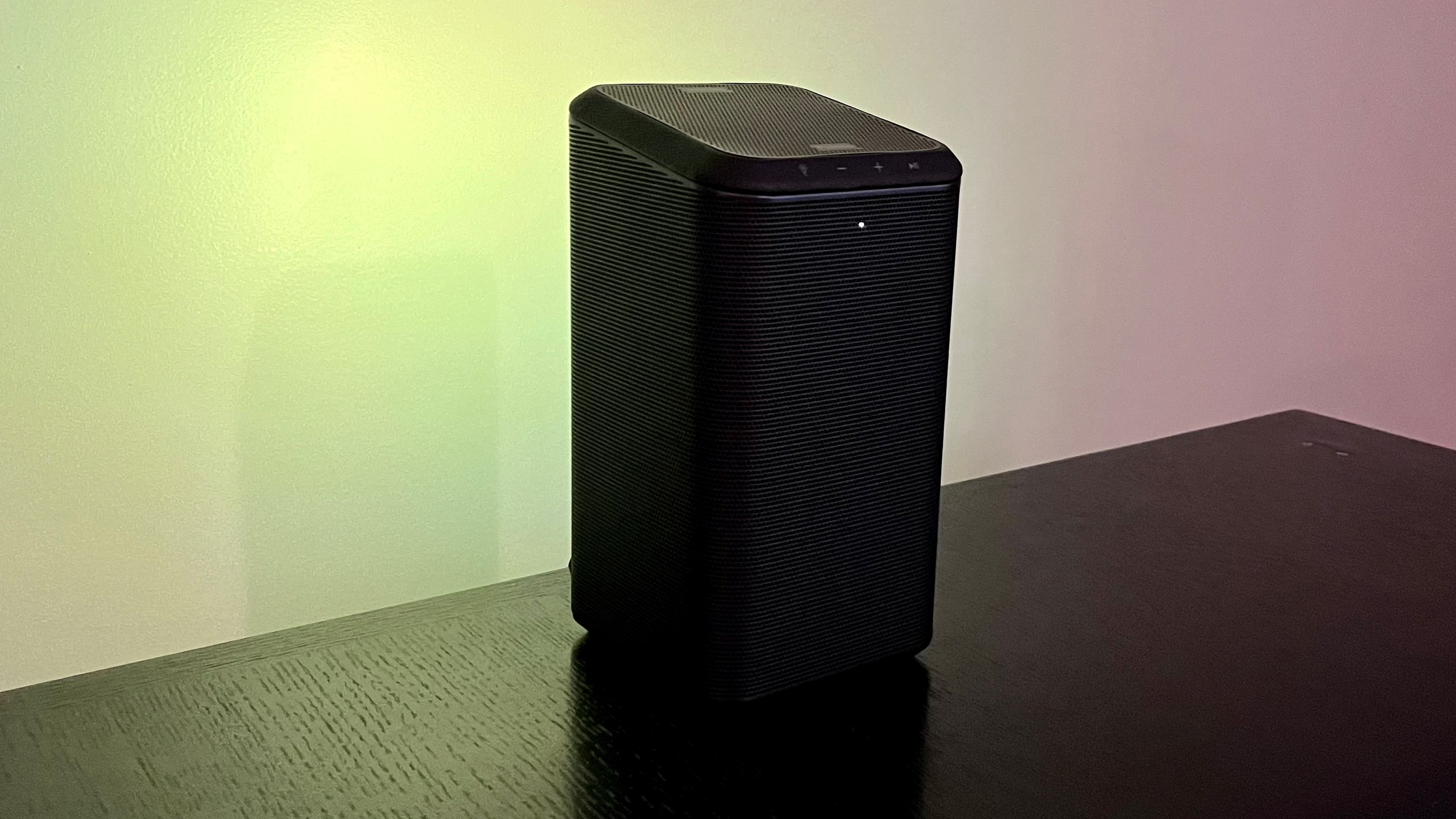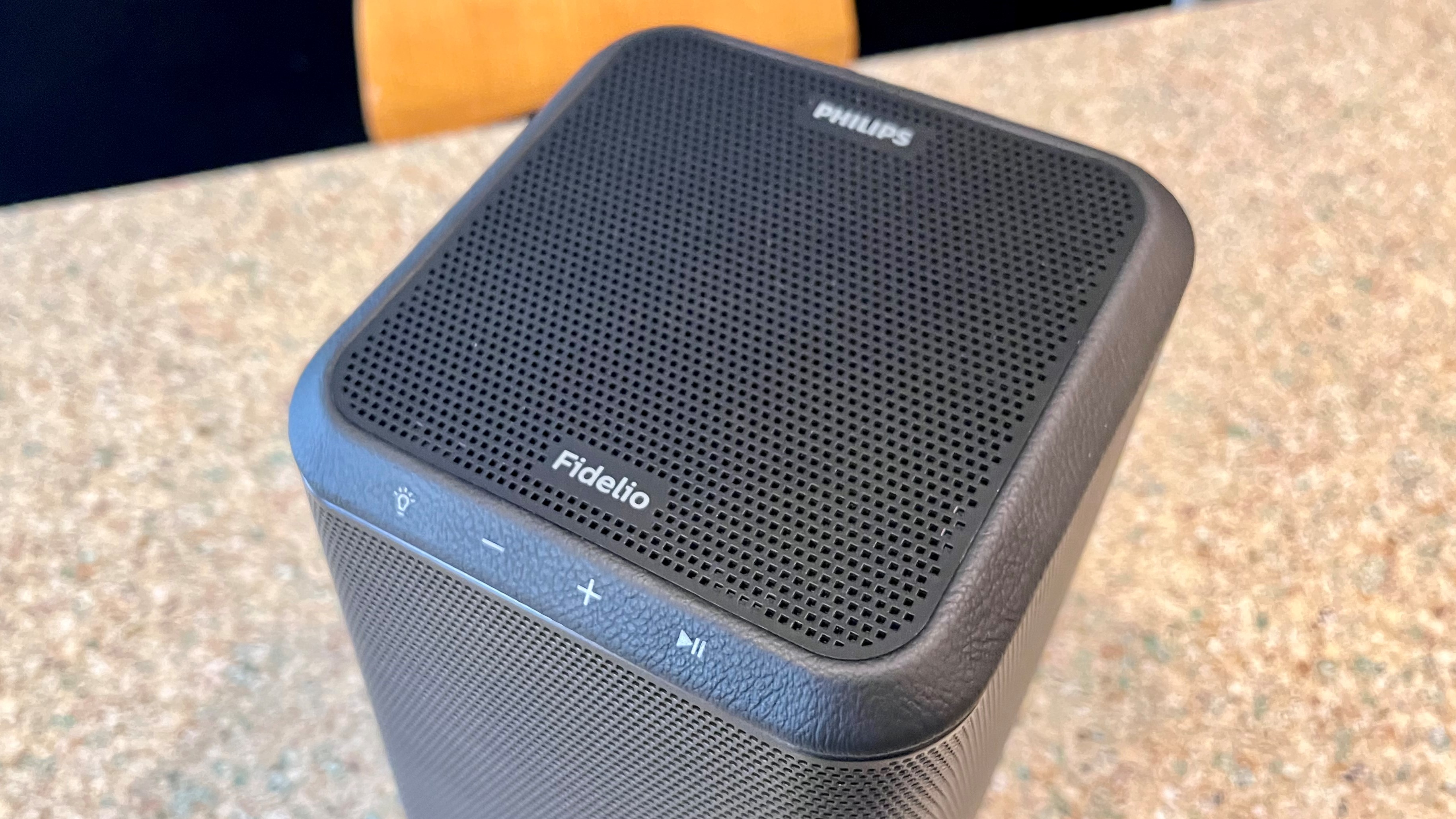I tried Philips’ Sonos-style wireless speaker – good sound and it’s lit
An all-in-one sound and light show

Philips’ Fidelio S1 is a compact wireless speaker in the Sonos mold, with an ability to stream music via a range of protocols, and to be paired with a second unit for stereo playback. A set of S1s can also serve as surround speakers in a full 7.1.4-channel Dolby Atmos system when they’re wirelessly linked with the company’s Fidelio B1 soundbar and W1 subwoofer.
Like many of the best wireless speakers, the S1 is designed to sound good on its own, and its compact 5.6- x 10- x 5.6-inch (w x h x d) size makes it a nice option for a small living room or for use as a kitchen or bedroom speaker. It’s similar in size to the Sonos One, another compact wireless speaker with multiple streaming talents, though at $299 / around £250, the S1 is priced higher than that model.
For setup and streaming, the S1 uses DTS Play-Fi, a platform that offers several advantages including multizone music playback, 7.2.4 surround sound, and a “critical listening” mode with up to 24-bit/192kHz high-res audio support. DTS Play-Fi also supports gapless audio playback, a relatively new feature that was added last September.
But Play-Fi isn’t the only thing the S1 does. It can also stream via Bluetooth, AirPlay 2, and Chromecast built-in. A 3.5mm analog input lets you connect hardwired sources, and it works with Hey Google, Siri, and Alexa so you can control volume adjustment and track skip functions.
As if all that weren’t enough, the S1 has Phiilps’ Ambilight built-in. Ambilight is a feature found on the company’s TVs (not available in the US) providing backlighting that adjusts the color to mirror onscreen action. (It can also be set to a single color such as white.) When playing music through the speaker, colors change in response to the music, and you also have the option to adjust the light for a single color and brightness level, or to switch it off altogether.

Hands on with the Fidelio S1
For a compact speaker, there’s quite a bit going on inside the S1. It’s a 3-way design, with a 1-inch front-firing tweeter, a 2.5-inch up-firing midrange, and a 3.5-inch down-firing woofer. A port is located on the back panel and passive radiators are arrayed on the speaker’s left and right sides. Power is specced at 120 watts peak and low frequency extension at 50Hz.
Setting the S1 up in my kitchen – in the same exact spot where a Sonos Move normally sits – I appreciated the speaker’s solid look. A black metal grille covers the front, sides, and top, with a Muirhead leather strip setting off the top surface. Basic controls are located on the strip’s front, while buttons to link the speaker to a Wi-Fi network and Bluetooth sources are provided on the back.
Getting up and running with DTS Play-Fi was simple – I downloaded a Philips-skinned version of the Play-Fi app called Philips Sound to my iPhone, and it gave me all the prompts needed to connect the speaker to my Wi-Fi. Once that was done, I entered my login information for the Tidal and Amazon Music Unlimited music services. Other best music streaming services in the Philips Sound control app include Spotify, Qobuz, Deezer, and Pandora, and you can also search for internet radio stations to stream.
A different app called PS Fine Tune is needed to adjust the lighting. After trying out the Follow Audio option with music, I decided the multicolored light show was a bit much for my taste, and settled on a Green Nature lighting scheme that matched my kitchen’s walls.
Playing the track Monk’s Robes by Deradoorian, the song’s spacy, reverb-drenched vocals and harpsichord-like keyboard runs sounded notably ethereal and rich, with the sound spreading out wide rather than seeming to emanate from a single, mono speaker. The S1’s performance here was most likely due to the fact that its top-mounted driver is designed to not just convey mid-range sound, but also deliver overhead effects in Dolby Atmos soundtracks.
Turning up the volume, I next played Pour Another by Yard Act. This driving, post-punk song came through cleanly, with the drums and bass sounding impressively taut. Louder and deeper bass can be heard in Nectarines by Floating Points, and the S1 handled it without wincing. The sound was engaging enough that I was encouraged to turn on the Follow Audio lighting option, which proved to be an appropriate choice for the burbling techno track.
The Philips Fidelio S1 is a very good sounding compact wireless speaker, and its Ambilight feature is loads of fun, if not exactly necessary. (If you have a Philips TV with Ambilight, the S1 can sync up with it, making the feature more useful.) DTS Play-Fi has also been beefed up quite a bit as a control platform over the past few years, and its welcome support for gapless playback – something that Apple Music appears to have lost with the latest iOS 16.2 update – will let you listen to side 2 of the The Beatles’ Abbey Road, along with countless classical works, without hearing annoying pauses in the music.
I look forward to spending more time with the S1, but in this case as a surround speaker paired with Philips’ B1 soundbar and W1 subwoofer. Look for that Dolby Atmos soundbar system review to land here in the very near future.
Get daily insight, inspiration and deals in your inbox
Sign up for breaking news, reviews, opinion, top tech deals, and more.

Al Griffin has been writing about and reviewing A/V tech since the days LaserDiscs roamed the earth, and was previously the editor of Sound & Vision magazine.
When not reviewing the latest and greatest gear or watching movies at home, he can usually be found out and about on a bike.